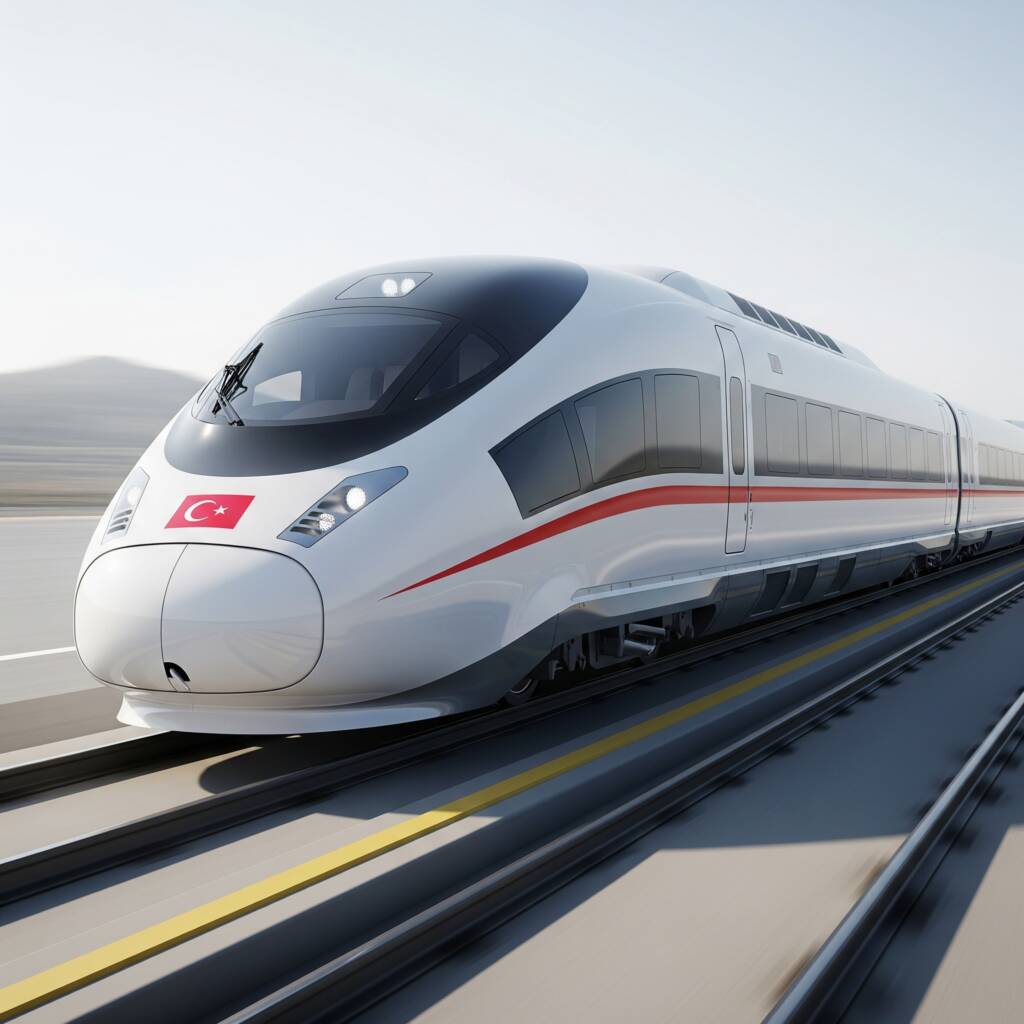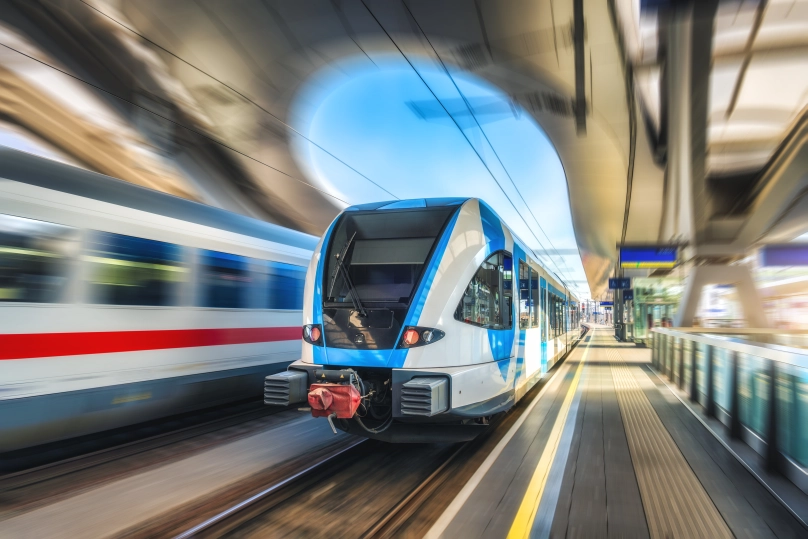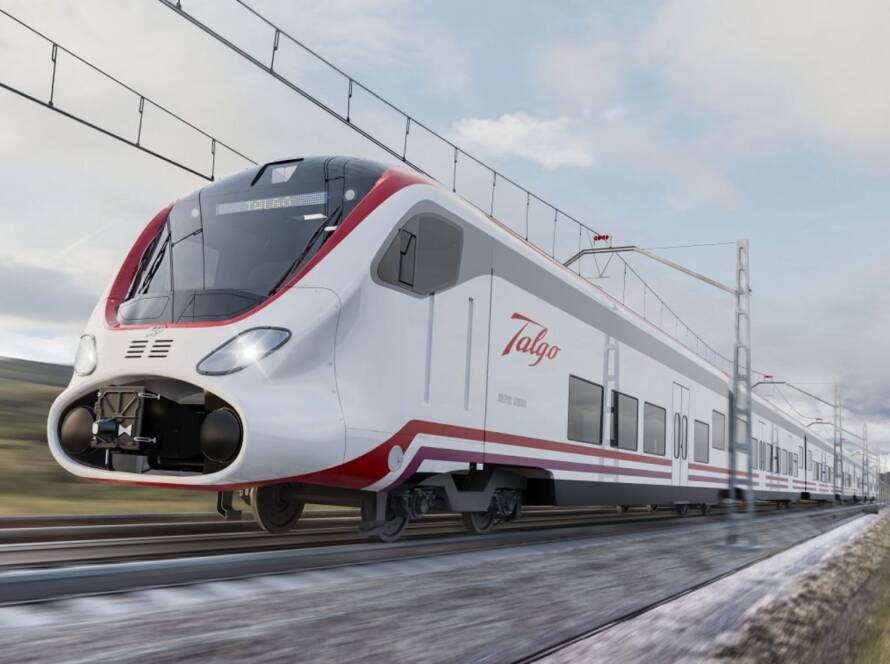Strategy, Finance, and Governance

The Future of Rail Strategy: Technological Superiority and a Holistic Approach
The future of rail logistics is being shaped by transformative technologies such as artificial intelligence (AI) and autonomous systems. If the technological sovereignty gained today in areas like signaling is lost tomorrow to AI-based logistics management or autonomous train technologies, today’s strategic advantages could quickly erode. Therefore, maintaining technological superiority is not a luxury but a necessity for the sustainability of the national strategy. Turkey must prioritize R&D and P&D (Product Development) in areas such as AI-based traffic optimization, autonomous freight trains, asset tracking via TÜRKSAT satellites, and the cybersecurity of the rail network through quantum encryption.
Realizing the full potential of Turkey’s railway network as a strategic asset is possible not only by building new lines but also by managing existing and planned infrastructure in the most operationally efficient, economically rational, and strategically coherent manner. This holistic approach encompasses a wide spectrum, from high-speed rail (HSR) procurement processes to daily maintenance operations, and from technology transfer to diplomatic leverage.
1. Strategic Crossroads: An Inclusive Network or Maximum Speed?
Turkey’s railway vision is highlighted by projects like the “Super High-Speed Train,” which aims to reduce travel time between Ankara and Istanbul to 80-90 minutes. However, such mega-projects require a critical balance in strategic resource allocation:
Cost and Inclusivity Balance: The per-kilometer cost of HSR lines is approximately 2.5 times higher than conventional lines suitable for 200 km/h. Strategic wisdom and priority should lie in ensuring rail access to every region of the country at reasonable speeds and shifting freight transport entirely to electric lines to ensure the network’s holistic development before focusing on “super-fast” lines on a few main corridors.
Technological Dependency Risk: Targeting very high speeds, such as 350 km/h, risks making the country dependent on a limited number of global suppliers capable of providing this technology. This could negatively affect costs, maintenance, spare parts, and technology transfer processes in the long run. A more balanced speed policy, such as 250 km/h, would allow access to a wider pool of suppliers and offer more opportunities for domestic industry participation.
2. Operational Excellence and Asset Management
The success of railway investments is measured not only by construction quality but also by rational procurement strategies and efficient operations.
Fleet Integrity and Standardization: In HSR procurement, using the same brand and model of trainsets standardizes maintenance processes, simplifies spare parts management, and reduces training costs. This standardization ensures continuity and specialization in personnel training, thereby improving service quality.
Maintenance and Operational Continuity: The strategic value of a railway network depends on its ability to operate without interruption. High-tech local maintenance teams positioned along the line can respond to failures instantly, ensuring the continuity of both civilian commercial flow and military transport in times of crisis.
3. Procurement Strategy: Total Cost of Ownership (TCO) and Domestic Industry
The long-term success of investments is possible with an approach that focuses not just on the initial purchase cost but on the total cost throughout the entire economic life.
Total Cost of Ownership (TCO) Analysis: In trainset procurement, TCO analysis—which includes maintenance, repair, spare parts, energy consumption, and even scrap value over a 30-year life cycle—must be the primary basis. Special attention should be paid to spare part prices, which can differ by as much as 10-15 times between companies. The “non-price elements” mechanism of the Public Procurement Law (No. 4734) is of critical importance here. The preference for sets with the most optimal life-cycle cost, reliability, and economic maintenance, rather than the most expensive or luxurious train, is a necessity for the efficient use of public resources.
Supply Chain Security and Domestic Contribution: Dependence on high technology creates vulnerability to increases in spare part prices and exchange rate fluctuations. Therefore, domestic production and supply must be encouraged. Access to technology for local companies should be facilitated through Transfer of Technology (ToT) and Transfer of Manufacturing (ToM) models. The requirement for local content should not be circumvented by exceptions or government-to-government (G-G) agreements, as this would prevent our national value-added industry from receiving a certain level of demand.
4. Generating Maximum Value from Existing Assets: The Ankara-Istanbul Line Case
Before embarking on new and costly projects, it is a critical priority to fully utilize the potential of existing infrastructure. The Ankara-Istanbul HSR, Turkey’s most prestigious line, offers significant opportunities in this regard:
Reducing Travel Time: The swift completion of critical infrastructure projects like the Doğançay Realignment and the T26 Tunnel will be the most efficient use of resources to bring the current 4.5-hour travel time closer to the targeted 2.5-3 hour simulation times.
Increasing Service Frequency: The line’s ERTMS Level 1/2 signaling infrastructure theoretically allows for services at approximately 5-minute intervals. The current low frequency of services indicates idle capacity. Sharing a transparent timeline for project progress and increasing the number of services will prove the line’s efficiency and the value of the service offered to the public.
5. The Future High-Speed Rail Fleet: Technical and Strategic Considerations
Turkey’s goals for expanding its HSR network require strategic decisions not only on building new lines but also on the technical specifications, passenger experience, and procurement processes for the trainsets that will serve on these lines.
5.1. Passenger Experience and Technological Capabilities
Seamless Connectivity (5G-R and FRMCS): For today’s passenger, uninterrupted internet is a basic need. The 5G-based FRMCS, which will replace the current GSM-R technology, not only provides high-speed internet for passengers but also enables critical safety applications like autonomous train operations. The work of domestic firms like ASELSAN in this field is crucial for developing national capabilities.
AI-Powered Safety: AI-based systems enhance safety and efficiency by monitoring driver fatigue in real-time and detecting potential failures in critical components before they occur (predictive maintenance).
In-Vehicle Information and Entertainment (PIS/PAS): A modern travel experience requires passengers to be accurately informed and to spend their time productively. The development of these systems by local firms like Savronik and Avikon is important for technological independence.
Inclusive and Comfortable Design: Future trainsets should prioritize passenger comfort, ergonomics, and flexible service packages that meet the expectations of different passenger segments. Accessibility for disabled individuals is not an option but a mandatory requirement, supported by features like the “Orange/White Desk” service.
5.2. Fleet Planning and Strategic Decisions
Speed Strategy (225 km/h vs. 350 km/h): Turkey faces a choice between the 225 km/h National High-Speed Train project developed by TÜRASAŞ, and the “Super High-Speed Train” projects requiring 350 km/h. The strategic decision of whether to expand the network nationwide with more affordable and domestically producible 225-250 km/h trains or to focus on prestigious lines with much more expensive and imported 350 km/h trains will shape the country’s railway future.
Vehicle Configuration and Capacity: Flexible configurations, such as 6 or 8-car sets based on passenger demand on different lines, can increase operational efficiency.
Future Fleet Size: The 2053 Transport and Logistics Master Plan’s objectives necessitate a significant expansion of the current HSR fleet. This need must be planned in detail, in line with the completion schedule of lines and passenger demand projections.
5.3. Excellence in Project Management and Procurement Processes
Qualified Consultancy and Systems Integration: The complexity of railway projects requires competent consultancy services and effective systems integration from the design phase to commissioning.
Transparent and Competitive Tendering Processes: The efficient use of public resources requires strict adherence to the Public Procurement Law (No. 4734). Exceptional tender methods should only be used in cases explicitly permitted by law, and utmost importance should be given to the technical and financial competence of contractors.
6. Financing Model: A Strategic Partnership with the Islamic Development Bank (IsDB)
Turkey can use international financial partnerships as a strategic lever to realize its railway vision. The long-standing cooperation with the Islamic Development Bank (IsDB) serves as a significant model for both fleet modernization and technology transfer.
To date, the IsDB has financed the acquisition of 16 of the 31 high-speed trainsets operated by TCDD Tasimacilik. This partnership has ensured international standards and a competitive procurement process, facilitated technology transfer elements such as the acquisition of a simulator, and contributed to the timely delivery of trainsets through prompt payments. Furthermore, it has provided Turkey with very advantageous financing with a 20-year maturity, including a 5-year grace period, enhancing the financial sustainability of the project.
This successful cooperation should be seen as an opportunity for technology and know-how transfer in future procurements. The IsDB supports Turkey’s ambition to become a leading country in this field and helps countries achieve a safer, faster, and more sustainable transport sector by promoting the shift to rail. It must be remembered that without finance, there is no project.

